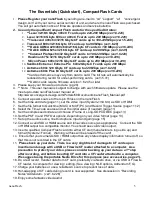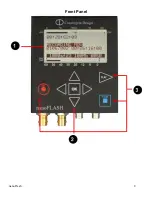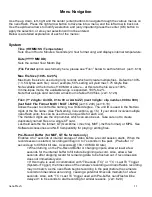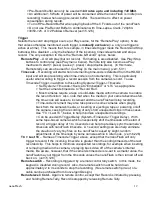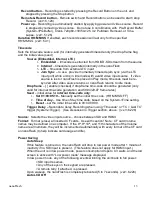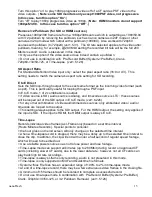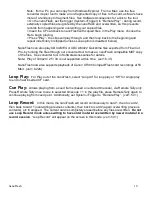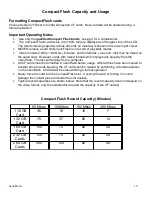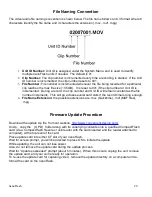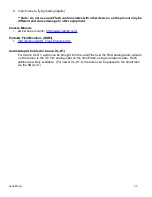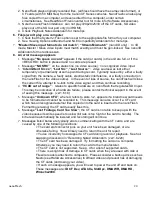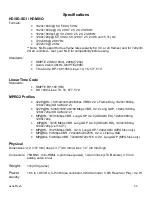
> Pre-Record buffer can only be used with
bit rates up to and including 140 Mbit
.
> An additional 1.5 Watts of power will be consumed while the nanoFlash is in idle (non-
recording) mode when using pre-record buffer. There will be no effect on power
consumption during record.
> Turn off Pre-Record Buffer when playing back off the CF cards out of the nanoFlash.
> Do not use Pre-Record Buffer in combination with Time-Lapse, Crank, 720p60-
>30/50->25, or 3:2 Pulldown Removal.(ver1.5.126)
Trigger
Selects the record/ stop trigger source (or Play source, for the “Remote Play” option). Note
that unless otherwise mentioned, each trigger is
mutually exclusive
(i.e. only one trigger is
active at a time). This means that, for example, in timecode trigger mode the Record and Stop
buttons will be disabled – only the behavior of the incoming timecode will start and stop a
record. The only exception to this is the “Remote & Record” option, below.
Remote Play
– Unit will play (but not record). Formatting is also disabled. Use Play /Stop
buttons to control play (see Play menu, below). Remote tally also becomes a Play
mechanism: start (1 press) / pause (1 press) / stop (double press). (In this mode,
Remote tally can also be used for Cue Play (in the main menu).) (ver1.5.31)
Timecode
– Recording will start when incrementing time-code is detected from the HD-SDI
input and will stop recording when time-code is not incrementing. This is particularly
useful when wanting to trigger a record session from the camera's record. To use
Timecode Trigger, in addition to this setting System->Trigger->Timecode :
> Set System->Timecode->Source to “Embedded” or “LTC” as appropriate.
> Set the camera's timecode to “Record Run”.
> Most cameras require a tape or solid-state media within the camera to enable
the record function. Also, note that when the media in your camera becomes full,
the time-code will cease to increment and the nanoFlash will stop recording.
> Time-code increment may also take place on some cameras when playing
back from the camera's media, or inserting or ejecting a tape or powering on/off
the camera, causing the recording of very short unexpected clips in these cases.
Use “TC > Last TC”, below, to help minimize unexpected recordings.
> Can be used with Trigger Delay (System->Timecode->Trigger Delay). With
some tape-based cameras which unexpectedly shift the timecode at the start of
record, a trigger delay of 1 to 3 seconds can help to precisely sync the camera's
timecode with nanoFlash timecode. A 1 second setting can also help eliminate
the creation of very tiny files on the nanoFlash caused by slight, random
adjustments of the timecode by some cameras while in idle mode. (ver1.6.226)
TC > Last TC
– Same as Timecode Trigger, above, except that the nanoFlash will only
trigger to record if the incoming timecode is greater than the ending timecode of the last
recorded clip. This helps to minimize unexpected recordings, for example when inserting
or removing media in the camera, or playing back video off of the camera's internal
media. Be aware, however, that if the camera's timecode is re-set to a smaller value, the
nanoFlash may not trigger from the timecode unless the nanoFlash is then turned off and
back on. (ver1.5.126)
Remote switch
– Recording is triggered by a remote control tally switch. In this mode, the
keypad is disabled during record. Also, the remote switch must be held down
approximately 2 to 3 seconds to stop the recording. (See remote switch pin-out, or a
cable can be purchased from Convergent Design.)
Remote level / hold
– Again via remote control, except that Record is initiated by pressing
and holding Remote Tally, Record is stopped by releasing Remote Tally.
nanoFlash
12





